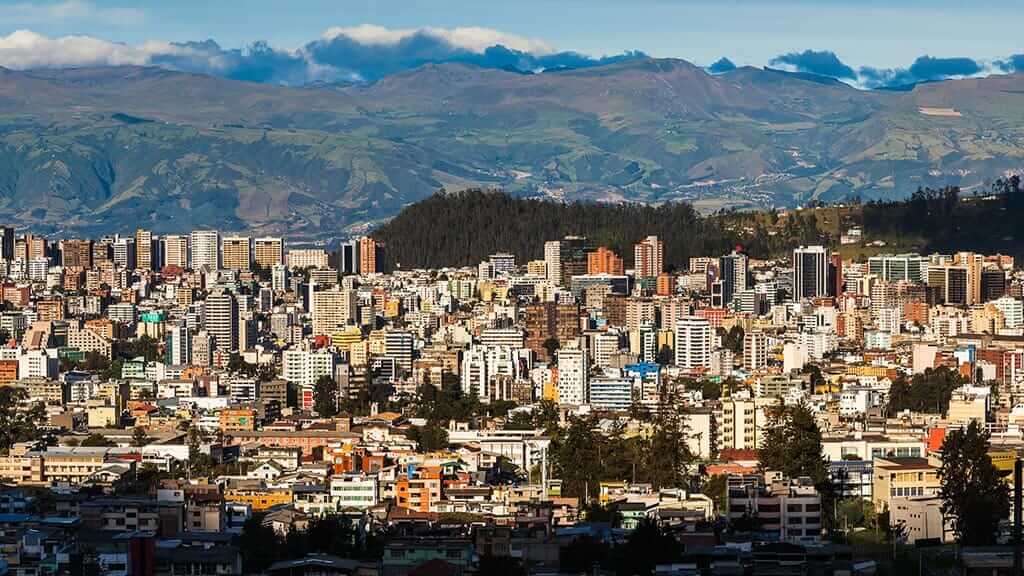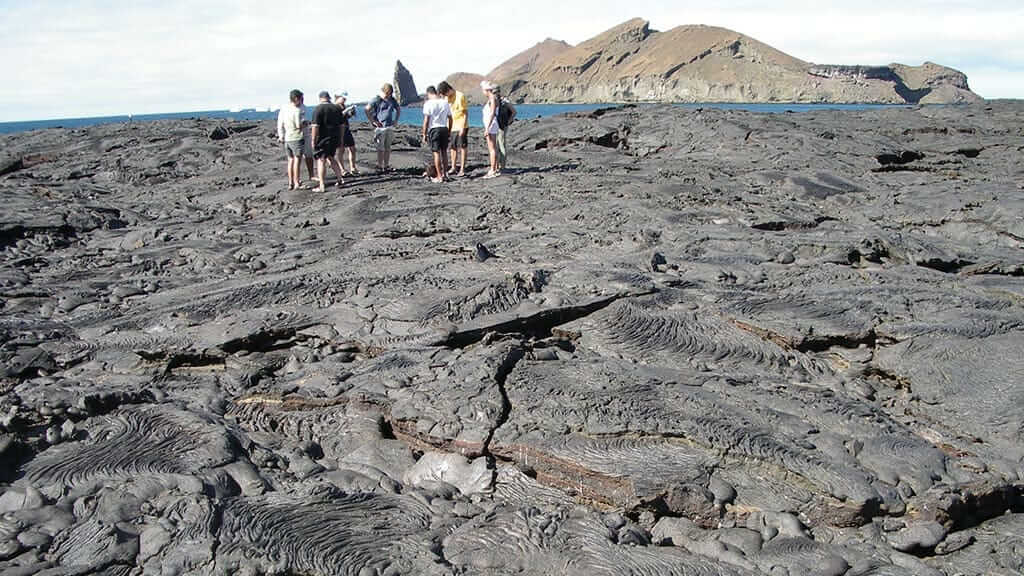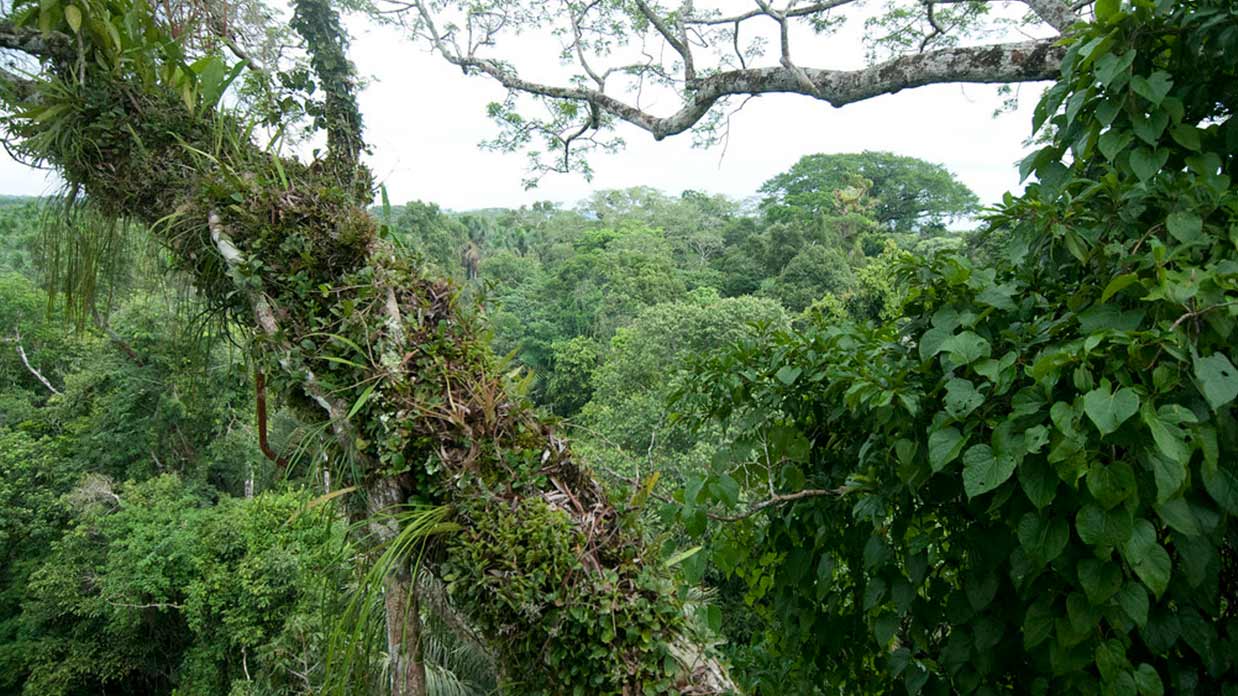Weather in Ecuador
As the old proverb goes, “There is no such thing as bad weather, only inappropriate clothing”. So, in this blog, we’ll not only cover the ins and outs of Ecuador's weather, but also the implications for your packing list.
What is the weather like in Ecuador? Well, it really depends on which area of the country you visit. Temperatures and rain vary greatly between the high Andes and the humid coast. Then there’s the Amazon rainforest. Does it really rain all of the time? How about the Galapagos Islands? How much sun to expect there?
When is the best time to visit Ecuador? The country is a great year-round travel destination, so there is no “best” or “worst” month to come. There are important climate differences across the calendar year to consider, though.
Keep reading for everything you need to know about Ecuador's weather. What different climate seasons to expect in Ecuador? What implications does that have for your packing list? Plus lots more Ecuador climate travel tips.
SECURE YOUR ECUADOR TRAVEL
Get a FREE personalised quote today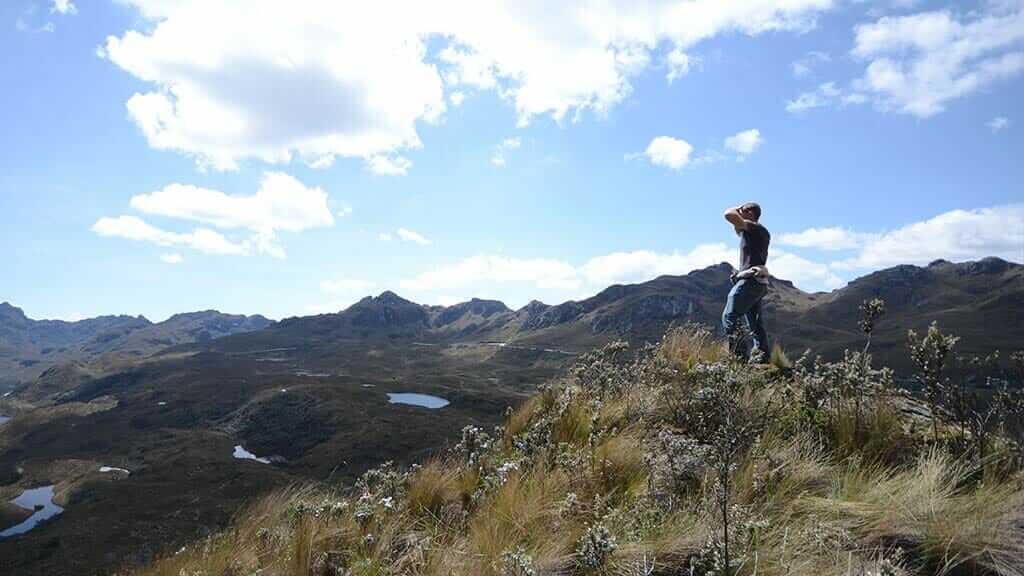
What is the weather like in Ecuador?
Let’s start with the good news.
Ecuador has pleasant weather conditions, making for an excellent year-round travel destination.
Ecuador does not experience 4 seasons (winter, spring, summer, fall) like the US and Europe. Instead, thanks to our location on the equator, we experience just 2 climate seasons – wet and dry.
That sounds simple enough, right?
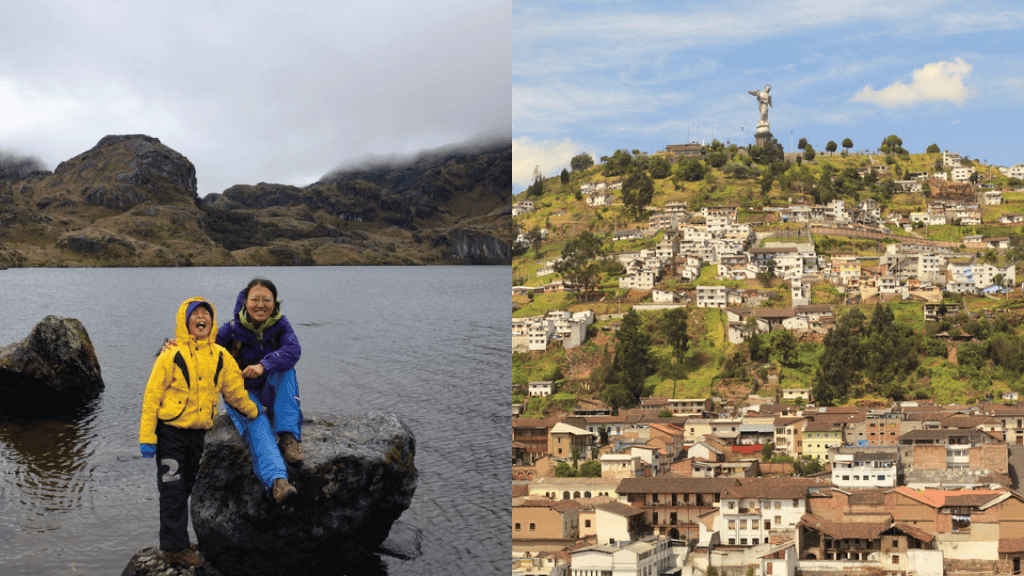
Well, actually, Ecuador's weather is a little more complicated than that.
There are large variations in altitude across the country, from sea level at Galapagos and the coast, all the way up to 6000+ meters at Chimborazo Volcano. Altitude has a big impact on temperature.
Another important consideration is geography and habitat within the country. The Sierra is high up in the Andes, with changeable mountain weather patterns as a result. The coast to the west of Ecuador is impacted by the whims of the Pacific Ocean. The rainforest to the east is dense in lush vegetation, with its own implications for climate. In between, there are also lots of special microclimates, such as the cloud forest.
So, there really is no one single answer to the question “What is the weather like in Ecuador”? The answer from a Quiteño will be very different from that of a Galapagos resident or rainforest tribesman.
Visitors to Ecuador, therefore, need to consider the weather patterns in each different region of the country.
Your Ecuador packing list will vary depending on which parts of the country you plan to visit.

Ecuador Weather by Region
1. Weather in Ecuador's Andean Highlands (Sierra)
Ecuador’s Andes region runs straight down the middle of the country, splitting apart the rainforest and the coast.
In the Andes, it’s common to experience four seasons in one day – the weather is unpredictable and changes fast. So, while weather forecasting on a daily basis is a fool’s errand, we can broadly divide the Andean climate into 2 seasons – wet and dry.
The DRY season runs from June through to September. These months bring mostly blue skies and dry clouds, but also strong winds and chilly nights.
In contrast, the WET season in Ecuador's Andes lasts from October through to May. Expect a higher chance of showers (especially in March and April), although this is not necessarily a daily occurrence. Take advantage of dry and sunny mornings, because rain clouds can roll in quickly in the afternoon. Heavy hail showers also surprise once in a while.
As a general rule, expect the unexpected. Just because you enjoy an al-fresco breakfast under glorious sun in the morning, don’t assume that the afternoon skies will look the same. When you venture out and about, go prepared with sun protection, warm clothes, and rain gear – that way you are covered for every likely weather scenario.
For more detailed information and climate charts, check out our Quito Weather blog.
2. Galapagos Islands & the Coast
The Galapagos Islands and the coastal region of Ecuador have two distinct climate seasons: Warm & Wet versus Cool & Dry. The difference between each season is quite subtle, but greatly impacts life at the Galapagos for visitors and animals alike.
Don't worry, in both Galapagos weather seasons, you'll still get to see all of the wonderful wildlife and stunning volcanic panoramas. But it does pay to understand the climate differences when you plan your trip. The Galapagos Islands are a once-in-a-lifetime experience, so you want to get it right!
So, here is a summary of what to expect in each Galapagos climate season:
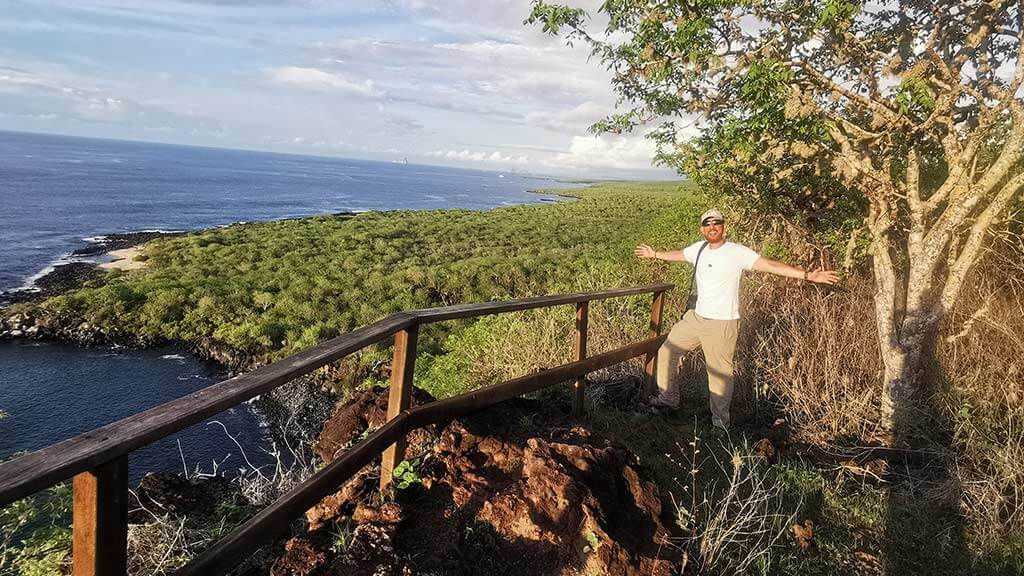
The WARM & WET Galapagos season runs roughly from December/January through to May. As the name suggests, the temperatures are sunny and warm, but visitors should also expect the occasional shower. You'll probably go home with a healthy tan, but sun protection is a must to prevent sunburn. A light rain jacket is a good idea for island excursions, especially in the highlands.
During this season, the rains are welcome in the Galapagos highlands, causing a dramatic transformation of this important habitat. Wet weather produces lush green vegetation, perfect conditions for land species such as the Giant Tortoise, Galapagos Finches & other land birds who find food sources plentiful.
GET FREE ADVICE
From an Ecuador destination expert todayIn contrast, the COOL & DRY climate season runs approximately from June to December. These months bring cloudier skies, cooler temperatures on land and at sea, and a generally drier climate. Many visitors find this season more pleasant for excursions. Sun protection is still important – even on cloudy days, it's easy to burn so close to the equator. A wetsuit is recommended for snorkeling as the sea temperatures drop. Leave your rain gear at home; there is little or no rainfall during the cool and dry months.
The cool and dry season is the time for the Galapagos marine species to shine. The cold Humboldt current brings rich nutrients from the Antarctic to Galapagos waters. These are optimal conditions for Galapagos Sealions, Marine iguanas, Sharks, and Seabirds like the blue-footed booby and Waved Albatross. Migratory whale species are also attracted to the Galapagos Islands to feed. In contrast, the dry weather leaves the highlands bare.
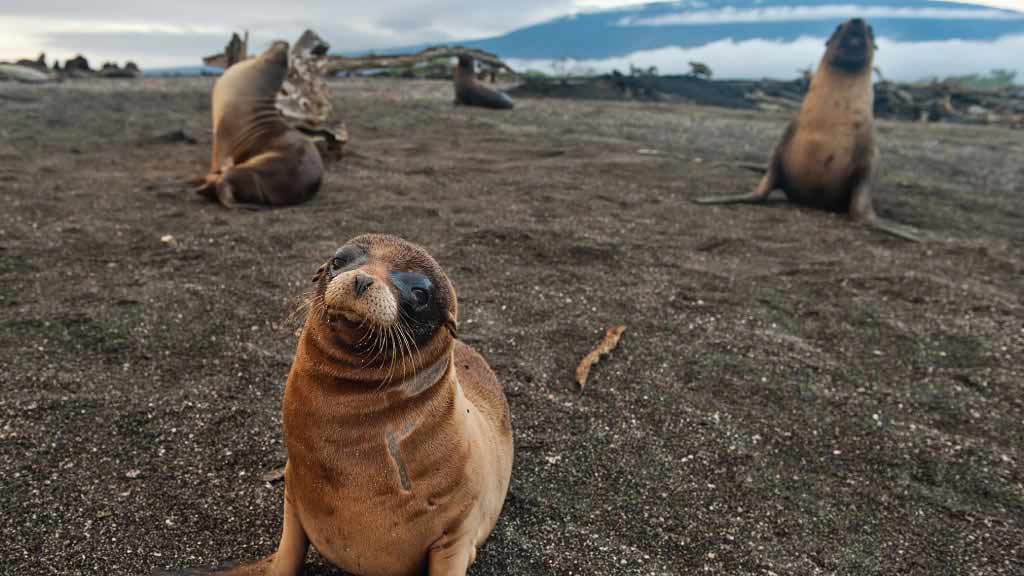
So, which Galapagos season is best for wildlife? In truth, changes in Galapagos weather bring about changes in wildlife behavior. Every month at Galapagos offers unbelievable wildlife spotting opportunities, but each different month has something special & unique going on for visitors to enjoy. Wildlife nesting, mating, hatching, or parenting behavior will often be a highlight of your trip. That's why we have written a separate detailed blog for each month at Galapagos: January, February, March, April, May, June, July, August, September, October, November, and December.
Still not sure? Check out our Galapagos Weather blog for more detailed information and climate charts. We also have a downloadable Galapagos packing list and tips to help with trip planning.
Why have we talked so much about the Galapagos Islands and barely mentioned the coastal region of Ecuador? Well, the coastal weather seasons are broadly the same as Galapagos. So if you’re looking for a tan, it’s better to travel in the earlier months of the year.

3. Ecuador's Amazon Rainforest Climate
The weather in Ecuador’s Amazon region is defined by 3 seasons: wet, dry, and in between. There is no “best” time to visit, as each season has pros and cons to consider.
The rainy season runs from March to July. In some ways, the name is misleading as it does actually not rain all day, every day, but heavy showers are to be expected. Advantages of travel during the wet season are higher river levels and more comfortable temperatures around 24 degrees Celsius (75 Fahrenheit).
Dry season lasts from December to March. Of course this is the rainforest, so still expect some precipitation, but certainly less than the rainy season.
The plus is that rain is less likely to interrupt activities, however visitors will have lower river level to deal with, which can make canoe navigation more complicated. Temperatures and humidity are also higher (38 degrees celcius / 100 Fahrenheit).
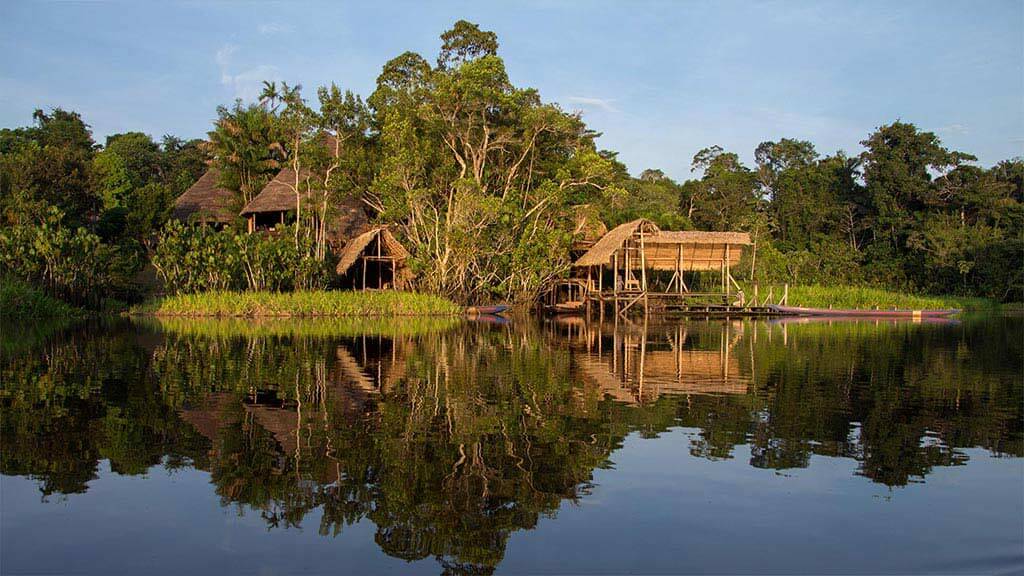
Shoulder season is defined by the remaining months of the year, roughly July to December. These months bring more unpredictable weather patterns, so expect a mix of rain and sun, with variable temperatures.
Now that you know what climate to expect, check out our Amazon packing list blog. We have you covered with advice on what to pack and tips to travel comfortably in all weather seasons.
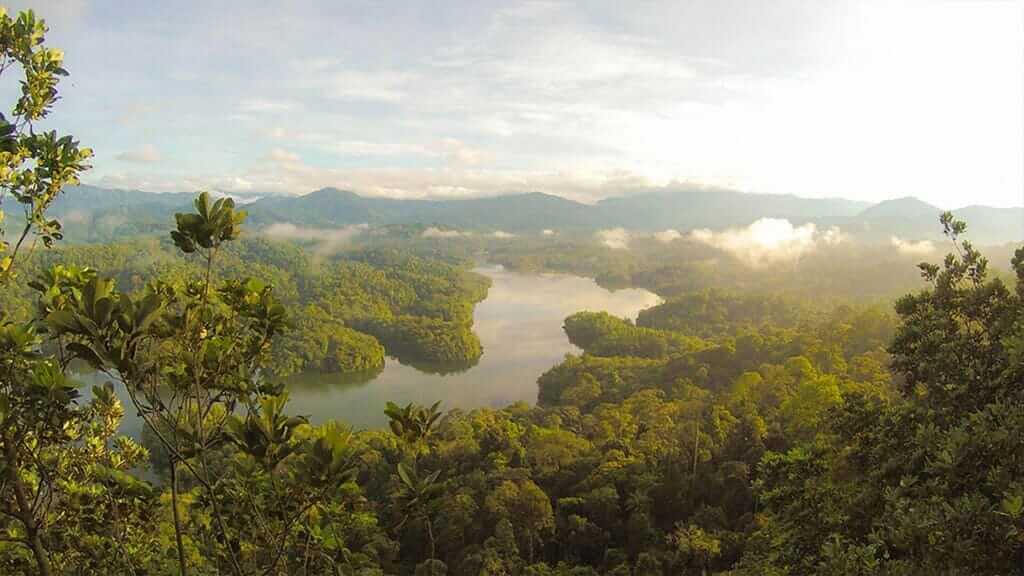
When is the best time to visit Ecuador?
Ecuador is a popular year-round tourist destination, suitable for travel in any month.
There is no one-size-fits-all cookie-cutter answer to "when is the best month to visit Ecuador?".
But, for travel planning purposes, these are some points to consider:
Ecuador Weather - Every region of Ecuador is open to tourist business throughout the year, and promises a pleasant climate. There are, however, climatic seasonal variations to take into account during trip planning, as detailed above in this post.
Ecuador Tourist Seasons - Ecuador's high season generally follows school & college vacations, including Easter, Spring break, July and August, and the Festive week of Christmas & New Year's. For those looking to avoid crowds and high prices, it may be best to avoid these times.
Ecuador Festivals - If you're looking for a local experience, then check out our informative blog about Ecuador's best fiestas and festivals. It's easy to plan travel dates around a popular festival experience, giving you the chance to join in with the fun!
Ecuadorian Wildlife - In most cases, Ecuador's birds and animals are around all year to enjoy. However, if you have a specific target in mind, like the Andean bear or the Waved Albatross, then do your research in advance to avoid missing out. The Albatross, for example, is only spotted at the Galapagos from April to December.
So, that in a nutshell is Ecuadorian weather. Go prepared based on which regions of the country you plan to visit, and in which climate season.
Contact us for a FREE TOUR QUOTE. Happy Gringo specialises in unique, custom-made itineraries right across mainland Ecuador and the Galapagos Islands. Of course, we’ll also be happy to share more information about Ecuador's weather conditions to help you plan the perfect vacation.
Book with The #1 Trusted
Ecuador Travel Agency
In conclusion, Ecuador's weather varies from region to region across the country.
The climate seasons in Ecuador are not like those back home, so take time to read this blog and to understand the key differences before traveling.
Your Ecuador packing list will vary depending on where in the country you head to and which month you travel.
Above all, though, Ecuador is open for action right through the year, so don’t let Ecuador's weather concerns put you off the trip.
Go prepared with appropriate clothing, and it’s true – there is no such thing as bad weather.

